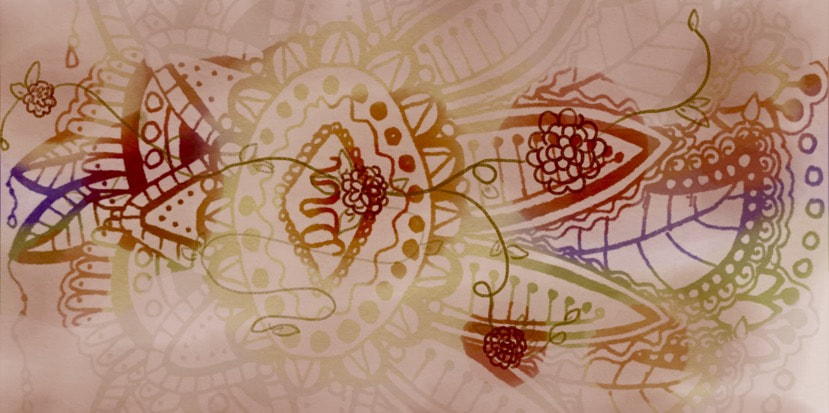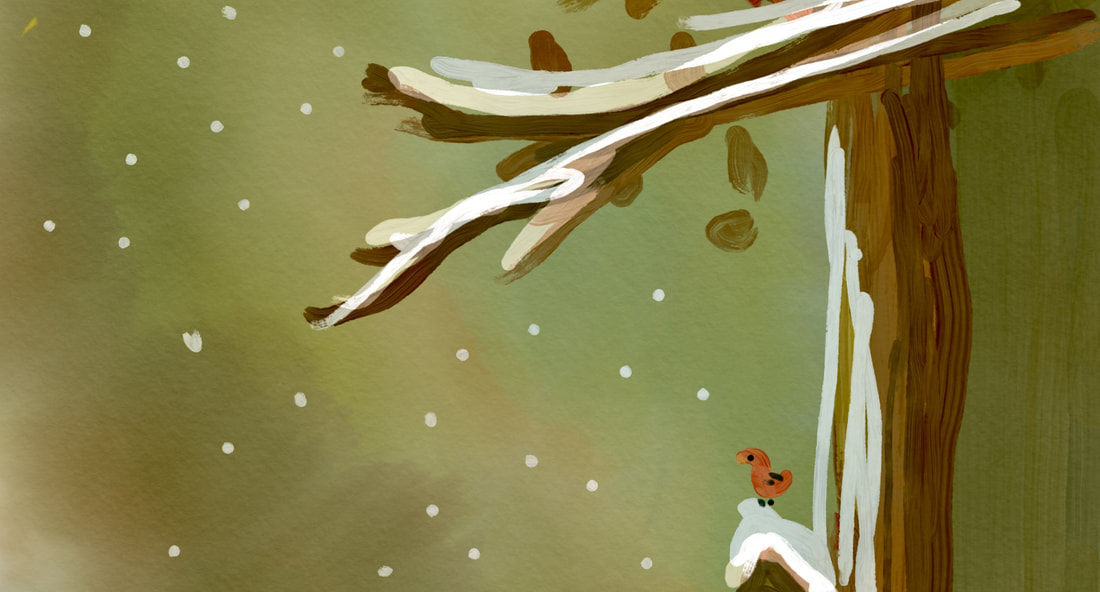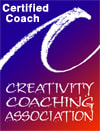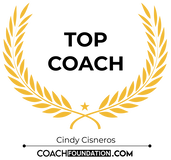|
The Holiday Season is quickly coming upon us and with its arrival we need to revamp our mindfulness. In this spirit, next week I will vacation from my blog, newsletter and website- so feel free to take the time to reread some past posts or take your own mindful break!
By now you have had some introduction to what mindfulness is and some ways to use it in your life. Mindfulness is beautifully simple and uncomplicated. When we are mindful, we are quieting the mind and focusing on our present experiences. Even those of us that feel seasoned and successful in mindfulness practices can get diverted from this state of being during the Holiday Season. Part of the problem with the Holidays is we want them to “be” something. Therefore, we have expectations for them. We compare out and feel pressure to deliver certain things to those around us. Usually these are with the intention of giving the perfect Holiday Season to others. This year, I give you permission to be a little more selfish. Ask yourself what makes the Holidays memorable and special for you? Of the list of things you “have to do” for your Holiday Season- why do items make that list? Let’s make mindful choices this year for how and why we celebrate. Try this simple exercise (as always I advise not to do these exercises without the guidance of therapy sessions- so let’s schedule one of those, too!): Make a list, drawing or representation of your choosing of what you plan to do for this Holiday Season. If that is already too overwhelming (hmm) then choose one holiday for the exercise. When you are finished, go through each thing you plan to do and “mini-meditate” on it. Consider it. Scan your emotions, scan your body. As you consider this thing, how does your body react? With tension? With warmth? What are your emotions associated with this thing? Stress, joy, something else? Ask yourself, why do you do this thing during the Holidays? For yourself, for others? Allow your mind to consider and hold this information as you think about this first thing. Your goal this year is a peaceful, mindful, happy Holiday Season. Does this thing fit into that picture? Continue the exercise as you go through all your plans. Amend them to take away or add what brings you closer to a more peaceful and enjoyable Holiday Season. Allow yourself to feel the anxiety of eliminating things you might be accustomed to doing from your list. Give yourself permission to do something different. So often when there are big calendar events like during the Holiday Season, we become so focused on outcomes and making them “perfect,” we miss enjoying them for what they really can be: peace, happiness, family, love, fulfillment and more. This year your new Holiday Tradition is yourself: create a more mindful Holiday Season. Talk to you again in two weeks (unless I see you in my therapy chair- go ahead- schedule something!) Happy Mindful Days! (c) 2017 Creatively LLC Therapy Skill: Make the Rules for your Life
Don’t bristle at the thought of rules too soon, Dear Creatives- these rules are made by you. Here is a logical concept laid out in print you probably know but may not have taken time to consider or apply, so read it twice: you can set the rules to your own life. One more time: you can set the rules to your life. In psychology-speak, we call these rules boundaries, and they are all yours. This is a concept worth discussing because every (and I mean every) person who has sat in my therapy chair, has needed to review and address their boundaries. They may have set some rules in their lives, but either they can be added to, revamped, or both. Part of the reason we are bad at this is because it involves change and as such, resistance from others in our lives. Another reason is we may not see that a new rule needs to be set because we are too close to it. Lucky for you, I am not too close to it. I describe it sometimes like this: have you ever stood outside at the base of a tall building and looked up? You can’t see the whole thing. You are too close. I, am across the street. I see you. Let’s assume that you have identified the need to set some new rules in your life despite some of the obstacles. What does that even mean or look like? We can break it down into categories. You have the right to write the rules for your relationships (romantic, friendship, familial, professional etc), you have the right to write rules for your physical space. You have the right to say when something is emotionally too much or not something you want to handle. In almost every area of your life there is a place for you to design a rule or a limit. Why do we do this? To protect ourselves. If we make the rule that within arm’s length is too close for a stranger to stand to us, we have a way to judge what is safe and can enforce that rule for ourselves. If we have a rule that if we are treated a certain way by a partner then that means we will leave a relationship, we have some groundwork in which to know if we are safe. If I know talking about a certain topic will make me cry and I don’t want to do that, I can decline to participate in a conversation and emotionally protect myself. And on and on. Like everything else, our personal history including how we are raised and what we have experienced, influence the type of rules we have in our lives. Some of us may have built protective walls that are too strong and become isolating. Others of us may have too few protective barriers and need to build more or reinforce what we have. Most of us fall somewhere in the middle. Taking time to assess and identify what rules you have for yourself in your life, and how they are functional or dysfunctional (including their absence) for you, is an important goal in therapy that I do in some way shape or form, with everyone. To help solidify the introduction to this concept, here is a brief art therapy exercise I have asked patients to do in groups and individually. You can repeat the exercise with a variety of boundary types (physical, interpersonal, etc etc). For the sake of this exercise, let’s think about romantic relationships. As always, I don’t recommend doing activities without the guidance of a therapist just in case you open up emotions you weren’t expecting- so give it a try and let’s talk more in session. The exercise: Draw an object that represents yourself. It can be as simple or complex as you would like. I often draw a butterfly for myself. On the side of your paper, while thinking about your romantic relationships, list some qualities they may have: tumultuous, peaceful, short, long, committed, open, emotional, loving, etc etc. When you feel done, begin to draw around the symbol of yourself a representation of how you protect or open yourself up to romantic relationships. Did you choose to draw an enclosure? Are you using just shapes or colors? Is there a height, thickness or texture? However you create, try to express and explore the feeling you have of exposure or closure and protection in relationships. When you feel finished, look at what you have made. What do you see? Any new or surprising information? On the other side of your paper, list some qualities of an ideal relationship for you. Would you like to be more open or giving? Would you like to be more protective of yourself or your partner? When you feel finished, go back to your drawing and add what you feel you need to create this environment of rules for yourself. Did you patch a wall? Did you lower one? Did you add a door or a lock? Did you add or subtract layers, colors or shapes? When you are done, consider what you have made. The beauty of art is, often we can visually express what is verbally difficult to say. Sometimes the visual serves as a bridge between our feelings and experiences, and active thoughts. Let this project communicate to you and help you understand your relationship rules and boundaries. Now you have had a quick and messy introduction to boundaries and making your own rules. Maybe you have even bought into that this would be a useful thing to examine and discuss. Believe me- it is important! Come to my chair and learn about yourself. Let’s start creating your happiest life. (C) 2017 Creatively, LLC Breaking Creative Blocks: Artist’s Dabble
You may not know this is a thing- but as a creative person it may be something you have noticed in yourself- creative people are distractible. Have you ever had anyone tease you about staying focused or on task? Have you ever noticed you may get excited about multiple projects? You may start something, which makes you think of another thing, then get excited about yet a third that you want to try. Of course there are degrees of everything, and there are certainly degrees of distractibility that become clinical and troublesome- but this is a trait you have that in general, can be healthy! Let me explain. Being distractible can be harnessed emotionally. We already know that creative people feel emotions more strongly than others. Good news- amongst the coping skills you have built in- you can be distracted! If you have ever spent time with small children, you know this technique well. It works just as effectively on everyone. Feeling anxious? Turn 180* and do something completely different. Distract yourself by making a change. Inside? Go out. Alone? Go be with someone. Working at a computer? Go cook a meal. There are endless varieties and options- harness your natural creative instincts and distract yourself. Being distractible can be harnessed creatively. We have had several discussions over past posts about breaking creative blocks. Here is yet another technique to use: distract yourself by trying something different. Or, as I like to call it, “dabbling.” A natural part of the ebbs and flows of your creative cycle are periods of lower creative energies, fewer ideas or otherwise feeling stuck. If you are feeling stuck in your chosen creative medium, try to garner inspiration and energy by dabbling in another. Painter’s block? Listen to music. Writer’s block? Try some painting! By trying something different, you take pressure off yourself to achieve certain goals and outcomes and naturally become more playful, and more easily absorb energy from a previously less explored creative source. If you aren’t stuck, but become excited or “distracted” by a different project, keep a running list, board, sketchbook or other record of things that inspire you. When you become blocked in the future, go to your list and pick something different. Abandon the previous idea and “dabble” to reignite your creative spirits. Then take this new energy with you, back to your previous project. Being distractible isn’t a weakness or a character flaw. It is a natural part of your creative personality that you can harness to strengthen yourself. Give yourself permission to be distracted. Take control of the trait and it becomes a natural skill for you to use purposefully and at will. Explore during your next session times you have felt stuck or distracted, and ways to take advantage of this important part of your creative personality! (c) 2017 Creatively, LLC |
get more from The Creativity CoursesLiking educational topics and knowing what's hot in creativity? Creatively has online courses, with an interactive creative community, coaching sessions and more in the Creativity Courses. Want these blogposts in a newsletter? Subscribe here, and get a free gift. Cindy Cisnerosis a Creativity Coach, Creative Therapist and Professional Artist in Sykesville, Maryland. She is an expert straddling the realms of arts, creativity research, psychology, therapy, and coaching. She provides Online Creativity Counseling in Maryland and Virginia, and Online Creativity Coaching throughout the USA, Canada and the UK tailored for the discerning, imaginative, artistic, and neurodiverse. The information provided in this blog is from my own clinical experiences and training. It is intended to supplement your clinical care. Never make major life changes before consulting with your treatment team. If you are unsure of your safety or wellbeing, do not hesitate to get help immediately.
Archives
July 2024
|
|
Concierge Therapy for Creatives in Maryland
Creativity Coaching Worldwide including the USA, UK and Canada |
Telephone |
|




 RSS Feed
RSS Feed

